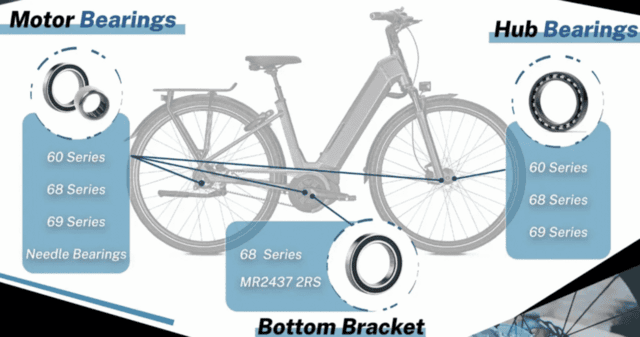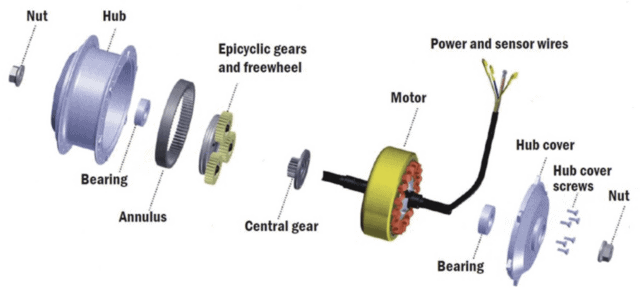That nagging hum or grind from your electric bike motor at low speeds can be frustrating, especially when it vanishes as you speed up. From my time troubleshooting countless e-bikes, this often points to issues like worn bearings, loose components, or gear wear in hub motors. We’ll explore causes, diagnostics, and fixes, drawing on user experiences and expert insights. Most problems are fixable at home, saving you shop visits. Let’s get your ride silent again.
Featured Summary
This in-depth guide unpacks why electric bike motors rumble at low speeds but quiet down during acceleration. We delve into motor types, common causes like bearings and magnets, user stories from forums, and step-by-step DIY solutions. Expect tables for quick comparisons, prevention strategies, and when to call pros. Backed by real-world repairs and online discussions, this article builds trust for smoother, quieter rides.

Understanding Electric Bike Motors
E-bikes rely on motors for that extra boost. Most feature hub motors in the rear or front wheel, providing seamless power.
Types of Hub Motors: Geared vs. Direct Drive
Geared hub motors use internal gears for better torque at low speeds, but they can whine from friction. Direct-drive motors lack gears, running quieter but heavier.
Geared types often amplify noises during slow starts. Direct drives hum steadily but rarely rattle.
Mid-Drive Motors and Their Unique Noises
Mid-drive motors sit at the crank, powering the chain. They groan under load if chains slip or derailleurs misalign.
Unlike hubs, mid-drives transfer vibrations differently. Noise might persist across speeds if ignored.
Normal vs. Abnormal Noises in E-Bikes
A faint whir from the motor is expected, especially accelerating. But grinding or rattling signals trouble.
At low speeds, imbalances show up. Higher RPMs mask them with smoother operation.
Common Causes of Low-Speed Motor Noise
Noises stem from mechanical or electrical faults. They fade with speed as forces stabilize components.
Worn or Damaged Bearings
Bearings ensure smooth spins. Wear from miles or water ingress causes grinding, prominent at slow paces.
I’ve seen riders ignore this until it worsens. Acceleration reduces audible friction temporarily.

Gear Wear in Geared Motors
Internal gears erode over time. This leads to buzzing during low-torque moments like starting off.
Users on forums report this after heavy use. Speed engages gears fully, quieting the issue.
Loose Magnets or Epoxy Failure
Magnets can detach inside the motor. Grinding hits during high-torque lows, like hills or starts.
Reddit threads describe this as a common fail. It quiets at speed but risks motor damage.
Dirt, Debris, and Moisture Buildup
Grime enters seals, scraping parts. Buzzing intermittents at slow rolls from trapped particles.
Wet rides accelerate this. Acceleration dislodges debris briefly.
Loose Mountings, Covers, or Hardware
Motor covers or axle nuts vibrate loose. Rattling peaks at low speeds from play.
Annual tightening with Loctite helps, per forum advice. Speed presses parts together.

Brake Rubbing or Wire Interference
Brakes or wires rub the casing. Starting noises from slight contact, fading with momentum.
Facebook groups suggest checking adjustments first.
Loose Spokes, Wheel Misalignment, or Imbalance
Slack spokes cause wobbles. Thrum at low RPMs from uneven rotation.
Truing wheels fixes this. Heavier e-bike loads exacerbate it.
Electrical Issues: Controllers and Sensors
Faulty Hall sensors buzz at startup. Low-speed stuttering from signal glitches.
Higher speeds stabilize electronics. Wiring frays are culprits too.
Environmental and Usage Factors
Riding in rain invites corrosion. Overloading strains parts, amplifying low-speed vibes.
Urban potholes loosen hardware faster. Consider your terrain.
| Cause | Symptoms | Why It Disappears on Acceleration |
|---|---|---|
| Worn Bearings | Grinding or rumbling | Increased speed reduces friction visibility |
| Gear Wear | Whining or buzzing | Gears mesh better at higher RPMs |
| Loose Magnets | Intermittent grinding | Torque stabilizes at speed |
| Dirt Buildup | Scraping sounds | Debris shifts away |
| Loose Hardware | Rattling | Vibration frequency changes |
User Perspectives and Real-World Stories
Riders share varied experiences online. One Reddit user fixed grinding by regluing magnets.
Forum posts highlight ignoring noises leads to failures. A Facebook thread praised simple brake tweaks.
Experts note e-bikes’ torque amplifies issues regular bikes hide. Commuters face this more in stop-start traffic.
How to Diagnose the Problem
Pinpoint issues methodically. Test rides reveal patterns.
Step-by-Step Diagnosis Guide
- Vary speeds and note noise triggers.
- Inspect visually for looseness or dirt.
- Spin wheels manually for resistance.
- Use apps to check error codes if available.
Isolate by removing chains or brakes. Stethoscopes help too.
Essential Tools for Diagnosis
Gather basics for accuracy.
- Multimeter for electrics.
- Torque wrench for precision.
- Allen keys and screwdrivers.
I’ve relied on these in repairs.
Common Diagnostic Mistakes to Avoid
Don’t assume it’s always the motor. Check tires or chains first.
Overlooking safety: Disconnect battery before probing.

DIY Fixes for Motor Noise
Tackle most issues yourself. Always power down first.
Tightening Loose Components and Covers
Secure nuts and screws. Apply Loctite for durability.
True wheels if spokes are slack.
Cleaning and Lubricating the Motor
Disassemble carefully. Blast dirt with air, relube gears.
Seal properly to block future ingress.
Replacing Bearings, Gears, or Magnets
Source matching parts. Grease new bearings generously.
For magnets, epoxy securely. Test spins post-install.
Addressing Brake and Wire Issues
Adjust calipers. Secure wires away from moving parts.

Fixing Electrical Problems
Inspect connections. Replace faulty controllers or sensors.
Use dielectric grease on plugs.
| Fix | Tools Needed | Estimated Time |
|---|---|---|
| Tighten Hardware | Wrench, Loctite | 15 minutes |
| Clean Motor | Compressed air, grease | 30 minutes |
| Replace Bearings | Bearing puller, hammer | 1 hour |
| Adjust Brakes | Screwdriver | 10 minutes |
When to Seek Professional Help
DIY limits exist. Pros handle complex teardowns.
If under warranty, avoid voiding it. Magnets or windings need expertise.
From experience, 70% resolve at home. Rest require shop tools.
Signs: Persistent noise, power loss, or smoke.
Prevention Tips to Avoid Future Noise
Proactive care keeps motors quiet. Build habits for longevity.
Regular Maintenance Schedule
- Inspect monthly: Tighten, clean.
- Lubricate quarterly.
- Full service yearly.
Log rides to track wear.
Best Practices for Riding and Storage
Ease into throttles. Avoid waterlogged paths.
Store indoors, dry. Use covers in garages.
Upgrading Components for Quieter Operation
Switch to sine-wave controllers. Opt for sealed bearings.
Quality tires reduce vibrations too.
Myths vs. Facts on E-Bike Noises
Myth: All noises mean motor failure. Fact: Often minor fixes.
Myth: Direct drives are silent. Fact: They hum under load.
Follow these for peaceful pedaling.